| Zeitschrift Umělec 1998/5 >> Manifesta 2 | Übersicht aller Ausgaben | ||||||||||||
|
|||||||||||||
Manifesta 2Zeitschrift Umělec 1998/501.05.1998 Kateřina Pavlíčková | bienále | en cs |
|||||||||||||
|
"The 20th century has definitely been a century of large art shows. Recently, we added another one to the collection: Manifesta. The second Manifesta biennial is taking place throughout the whole summer in Luxembourg from June 28 until October 11. It exhibits 47 artists of younger and middle generations from all over Europe. The first round of this new type of biennial took place in Rotterdam in 1996 with the aim of presenting new European art in a way that is different from other large contemporary art shows (such as the Venice Biennale and documenta in Kassel). Contrary to these shows, Manifesta is not defined by a certain topic (documenta) or by “national presentations“ (Venice).
It is indicative that the idea to organize a large show of European art was born in 1993, some time after the fall of the Iron Curtain. The biennial aims to express the new open situation in Europe that is creating the conditions for the upcoming generations of artists. It is quite common today to see East European artists travelling to the West and living there for a while. This could be defined as a migrant situation. In the continuous flow it is hard to speak of individual cultures because a culture closed unto itself does not exist any more and “all cultures of today are transcultural“ (W. Welsch). From this point of view, the Venice Biennale may seem obsolete, corresponding better with 19th century ideology. The institution of Manifesta itself is meant to respond to these transcultural conditions: it is nomadic in character and each biennial takes place in a different European city. The city has to cover one third of all expenses of the show, provide a suitable exhibition space and allow the foreign curators to select works freely. Manifesta uses different curators for each biennial. This year’s curators include Robert Fleck from Vienna, Marie Lind from Stockholm and Barbara Vanderlinden from Brussels. These three cooperated with an international professional committee comprising Chris Dercon, Hedwig Fijen, Kasper König, Enrico Lunghi, Henry Mayric Hughes, Hans Ulrich Obrist and Lilijana Stepančič. The selection criteria for choosing the artists were not based on a predefined topic but formed during their travels through Europe and by their “collective research.“ In the ten months working on Manifesta 2, it was not possible for them to get to know the atmosphere in each individual country in detail, but that was not the curators’ aim anyway. Their work, in this sense, reflects today’s migratory conditions more clearly: the curators traveled intentionally from West to East without staying too long in any one region. During their travels, as Marie Lind put it, they conducted “purely subjective research reflecting our sensibility.“ Today’s migratory way of life, however, brings up blurred feelings of deep connections to the places in which we live in as well the risk of feeling that we are being cut off from our roots. The Manifesta 2 artists were asked to make site-specific works. These included aesthetic plays on video from Garden de Luxembourg or Luxembourg in Paris and Paris in Luxembourg by Dominique Gonzalez-Foerster (Strassbourg); flower beds arranged in front of Casino Luxembourg by Tobias Rehberger (Frankfurt); military air space with a simulated entrance by Marko Peljhan (Ljubljana); and the ”redesigning” of shop windows - excellent work by Inessa Josing (Talinn), who used display techniques to turn a few shop windows into a kind of biblical consumerist appeal (e.g. “What should I do to be saved?“). Krištof Kintera’s window display shows unusable appliances so appealing in their design that one would like to buy them. These works represent clashes with the system of established functions in the city, including our perception. The works have strong social and critical subtexts to them: particularly the two latter works could be defined as “critical public art“ (K Wodiczko). Dr. Galentin Gatev’s (Bulgaria) installation is quite witty. In one of the city’s underground parking spaces he installed a video depicting some “transportation problems“ of Bulgaria’s clergy, accompanied by a figure of a priest caught in a sort of never-ending circular ride around an “eternal light“. It may be of no surprise that Manifesta 2 exhibited an abundance of video work. Some of the best works include a video installation by Ann-Sofi Siden (Stockholm) entitled Who told the room maid? Situated in a small basement room of the Casino, the work plays with the theme of ubiquitous surveillance, interference of the public sphere with the private space. The topic of personal confession and the related issues of body and identity are quite broad in their scope. Manifesta presents two extremes: on the one hand, with the obsessive observation of one’s own acts documented in an abundance of photographic self-portraits by Elke Krystufek (Vienna), and on the other hand, with the minimalist performance of sculptor Tanja Ostojic (Yugoslavia), which takes place in a glass elevator of a museum accompanied by music. Her act is an expression of internal spirituality. Manifesta intentionally lacks one unifying concept: a theme. The curators themselves assert that the work is not supposed to be dogmatic and should be flexible. They did not apply any PC criteria in choosing the art works. Therefore, European countries are not necessarily evenly represented. The caption for each work also lacks the information regarding the artist’s nationality. European art is becoming more and more international, or transnational. Manifesta Biennial is tracing this evolving transformation. The question “how can art keep its ability to start new relations within cultural and social forces in the society?“ (B. Vanderlin) is becoming a key one. "
01.05.1998
Empfohlene Artikel
|
|||||||||||||
|
04.02.2020 10:17
Letošní 50. ročník Art Basel přilákal celkem 93 000 návštěvníků a sběratelů z 80 zemí světa. 290 prémiových galerií představilo umělecká díla od počátku 20. století až po současnost. Hlavní sektor přehlídky, tradičně v prvním patře výstavního prostoru, představil 232 předních galerií z celého světa nabízející umění nejvyšší kvality. Veletrh ukázal vzestupný trend prodeje prostřednictvím galerií jak soukromým sbírkám, tak i institucím. Kromě hlavního veletrhu stály za návštěvu i ty přidružené: Volta, Liste a Photo Basel, k tomu doprovodné programy a výstavy v místních institucích, které kvalitou daleko přesahují hranice města tj. Kunsthalle Basel, Kunstmuseum, Tinguely muzeum nebo Fondation Beyeler.
|







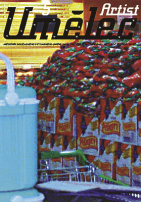
















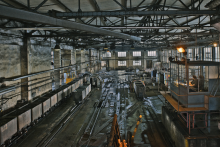
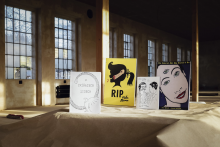
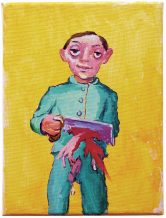
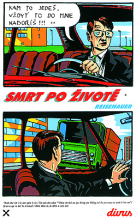


 Potsdamer Str. 161 | Neu Divus in Zwitschermaschine, galerie und buchhandlug in Berlin! | Mit U2 nach Bülowstraße
Potsdamer Str. 161 | Neu Divus in Zwitschermaschine, galerie und buchhandlug in Berlin! | Mit U2 nach Bülowstraße
Kommentar
Der Artikel ist bisher nicht kommentiert wordenNeuen Kommentar einfügen